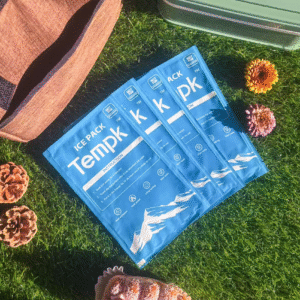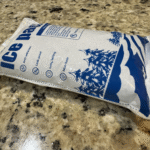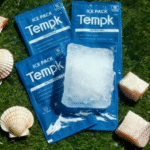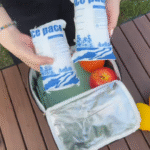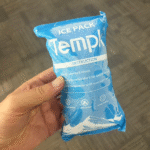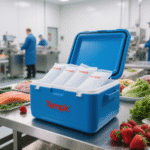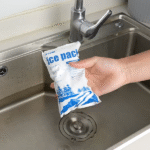So bestimmen Sie die Größe einer Packung 24 Trockeneis-Packblatt in 2025
Sie benötigen gefrorene Lieferungen, die ohne kostspielige Rücksendungen unversehrt ankommen. A Packung mit 24 Trockeneisschütze sorgt für eine wiederholbare Platzierung, schnellere Bankarbeit, und eine sauberere Handhabung – wenn es richtig dimensioniert und belüftet ist. Dieser Leitfaden zeigt Ihnen, wie Sie die Wärmebelastung in Blattzahlen umrechnen, Wählen Sie Filme, die sich bei −78,5 °C biegen, und Standardisierung von Layouts für 24–120 Stunden.
-
Welche Spezifikationen definieren einen zuverlässigen Packung mit 24 Trockeneisschütze für Essen, Pharma, und Labore
-
So ermitteln Sie schnell und rechnerisch die Größe Ihrer Trockeneismasse für 24–120 Stunden
-
Welche Filmdicke und Entlüftung verhindern Risse und Brüche bei −78,5 °C?
-
Welche Layouts reduzieren Hotspots und senken die Gesamteisausgaben?
-
Was 2025 Innovationen helfen Ihnen, länger mit weniger Eis zu versenden
Was ist eine Packung? 24 Trockeneis-Packblatt – und wann sollten Sie es verwenden??
Kurze Antwort: eine Packung 24 Trockeneis-Packfolie ist eine flexible Folie mit vierundzwanzig gleichen Zellen, die mit Pellets oder Nuggets vorgefüllt sind, die Sie um die Nutzlast falten oder schichten. Verwenden Sie es, wenn Sie eine gleichmäßige Kälte wünschen, ordentliche Dosierung, und einfaches Zählen bei sich wiederholenden Auspackvorgängen.
Die Geometrie verteilt die kalte Oberfläche und beschleunigt das Packen. Im E-Commerce Tiefkühlkost, Diagnostik, und Export von Meeresfrüchten, Teams packen schneller und mit weniger Überfüllungen, da die Zellen als eingebauter Messbecher dienen. Der Packung mit 24 Trockeneisschütze reduziert außerdem Staub und Reinigungsaufwand, Erhöhung der Banksicherheit und -konsistenz.
Pelletgröße und Zellvolumen – worauf sollten Sie achten??
Für enge Hohlräume, ~3 mm große „Reis“-Pellets fließen gleichmäßig in kleine Zellen. Für langsameren Verlust, ~16 mm Pellets halten die Masse länger. Geben Sie Gramm pro Zelle mit einer Toleranz von ±5–7 % an, damit die Empfangsteams schnell prüfen können.
| Zellspez | Typischer Wert | Pass/Fail-Prüfung | Was es für Sie bedeutet |
|---|---|---|---|
| Zellen pro Blatt | 24 | Anzahl und Nahtintegrität | Wiederholbare Dosierung & Abdeckung |
| Gramm pro Zelle | 15–25 g | Wiegen 10 Zellen; ±5–7 % | Vorhersehbare Gesamtmasse pro Blatt |
| Entlüftung | Mikroperforationen oder Lasernadellöcher | Nebeltest auf Gasaustritt | Geringeres Berstrisiko und gleichmäßigerer Verlust |
| Filmdicke | 110–150 μm (≈3–4 Mio) | Kaltflex-Biegetest | Weniger Risse bei −78,5 °C |
Praktische Tipps für Ihr Bankteam
-
Verwenden Sie Abstandshalter oder Tabletts So reibt die Folie während des Transports nie an scharfen Ecken.
-
Masse oben/unten teilen auf hohen Kartons, um Farbverläufe zu glätten.
-
Lassen Sie einen Freiraum von 10–15 mm unter dem Deckel, damit CO₂ sicher entweichen kann.
Fall der realen Welt: Ein Diagnostik-Versender hat von losen Pellets auf eine Packung umgestellt 24 Trockeneisschütze. Die Packzeit verkürzte sich um etwa ein Viertel, während sich die Schwankung der Ankunftstemperatur verringerte, Reduzierung eingefrorener Ansprüche auf einer 72-Stunden-Spur.
Wie dimensioniert man eine Packung? 24 Trockeneis-Packblatt für 24–120 Stunden?
Verwenden Sie eine schnelle Formel, Konvertieren Sie dann die Masse in Blattzahlen und platzieren Sie sie nach Zonen.
Isolationsfaktor: VIP 0.7, Pur 0.8, EPS 1.0, Gewellt 1.5. Hinzufügen +10% für warm (20–30 °C) Und +20% für heiß (>30 °C) Gassen. Konvertieren Sie in Blätter, indem Sie durch die Masse einer Packung dividieren 24 Trockeneisschütze (Zellen × Gramm pro Zelle). 40–50 % unten platzieren, 35–40 % Seiten, und 10–20 % oben.
Beispiel: 20 L EPS, 72 h → 0.10 × 20 × 3 × 1.0 = 6.0 kg. Wenn eine Packung 24 Trockeneis-Packblatt wiegt 0.48 kg, Du brauchst 13 Blätter (aufrunden). Teilt: 6 unten, 5 Seiten, 2 Spitze.
Kurzreferenztabelle – Zielmasse und Zellbelastung
| Std | EPS-Ziel (lb) | VIP-Ziel (lb) | Pro Zelle, wenn 24 gefüllt | Warum hilft es |
|---|---|---|---|---|
| 24 | 5–10 | 3–8 | 0.21–0,42 Pfund | Fügen Sie in der heißen Jahreszeit einen 24-Stunden-Puffer hinzu |
| 48 | 10–20 | 6–14 | 0.42–0,83 Pfund | Oben/unten ausbalancieren, um den Farbverlauf zu glätten |
| 72 | 15–30 | 9–20 | 0.63–1,25 Pfund | Betrachten Sie eine Blockunterlage |
| 96 | 20–40 | 12–26 | 0.83–1,67 Pfund | Planen Sie eine erneute Vereisung oder eine Isolierung mit höherem R ein |
Labortauglicher „Lane-Rechner“ (Engagement-Booster)
Welche Folien und Lüftungsschlitze halten eine Packung 24 verhindern, dass die Trockeneis-Packfolie reißt oder platzt?
Wählen Sie LLDPE/EVA mit 3–4 mil oder Nylon/PE-Coex, wenn der Missbrauch hoch ist, und immer einen Leckpfad für CO₂ vorsehen. Eine dickere Folie verbessert die Haltbarkeit, jedoch nicht die Haltezeit. Die Haltezeit hängt von der Isolationsqualität und der Gesamtmasse ab.
Bei −78,5 °C, Standard-LDPE wird kerbempfindlich. Abgerundete Nähte ≥6 mm mit Anti-Berst-Muster überstehen die Handhabung der Nabe. Eine Packung 24 Die Trockeneis-Packfolie sollte einen dokumentierten Entlüftungsbereich umfassen, damit Gas entweichen kann; Eine luftdichte Verpackung ist das eigentliche Risiko, denn 1 kg Trockeneis ergibt ungefähr 541 L CO₂-Gas.
Selbstkontrolle: spez & Sicherheit
-
Film: LLDPE/EVA 3–4 Mio, oder Nylon/PE, wo das Pannenrisiko hoch ist.
-
Innen und außen belüftet: Mikroperfektion oder Fold-and-Clamp; Niemals luftdicht.
-
Etiketten: Und 1845, richtiger Versandname, und Netto-Trockeneismasse (kg).
-
Layout: 40–50 % unten, 35–40 % Seiten, 10–20 % oben; Kopfraum 10–15 mm.
-
Überwachen Sie CO₂ an Docks; Zug zum 5,000 ppm-Arbeitsplatzgrenzwert.
Gut-besser-beste Filmauswahl
| Anwendungsfall | Gut | Besser | Am besten | Was es für Sie ändert |
|---|---|---|---|---|
| Pellets, Paket | 3 mil LLDPE | 3 Tausend LLDPE/EVA | 3 Mil-Nylon/PE | Bessere Kälteflexibilität und Durchstoßfestigkeit |
| Blöcke/raue Naben | 4 Tausend LLDPE/EVA | 4 Mil-Nylon/PE | 4 Mil-Nylon/PE + Innenfutter | Weniger Tränen um Scherben herum |
| Geschützter Liner | 2 mil LLDPE | 2 Tausend EVA | 3 Tausend LLDPE/EVA | Nur wenn vollständig fachgeschützt |
Wie platziert man eine Packung? 24 Trockeneis-Packblatt für gleichmäßige Ergebnisse?
Standardisieren Sie drei Muster und trainieren Sie sie.
| Muster | Wann zu verwenden | Schritte | Was es für Sie tut |
|---|---|---|---|
| Spitze + Untere Laken | 24–72 h | 12 Zellen oben, 12 unten; Abstandshalter | Glättet vertikale Farbverläufe |
| Block + Blatt | 72–120 Std | Blockbasis + 24-Zellblatt oben | Stabilisiert den Halt; glättet kalt |
| Blattumhüllung | Seltsame Formen | Um die Tabletts herum vorfalten | Konforme Kühlung und saubere Werkbankarbeit |
Umsetzbare Tipps für bestimmte Szenarien
-
Flugrouten in der Hochsaison: Fügen Sie einen Ganztagspuffer zum Schutz vor Verzögerungen hinzu.
-
Hubs mit hohem Missbrauch: Verwenden Sie Nylon/PE-Coex und breitere Nähte (≥6 mm).
-
Strenge behördliche Kontrollen: Mark A 1845, richtiger Versandname, und Nettomasse.
Feldbeispiel: Ein Exporteur von Meeresfrüchten fügte einen Block plus eine Packung hinzu 24 Trockeneisbeutel darauf. Langstreckenhalt verlängert sich bei ähnlicher Gesamtmasse aufgrund des besseren Oberflächenkontakts um etwa einen Tag.
2025 Trends für die Packung 24 Trockeneisschütze
Der 2025 Playbook-Gefälligkeiten Richtige Größe und belüftetes Design. Eine Packung 24 Trockeneis-Packfolien in Kombination mit VIP-Wänden reduzieren die Masse oft um etwa ein Viertel und behalten gleichzeitig den Halt. Konverter bieten jetzt dokumentierte Mikroperfationsbereiche und Taschentoleranzen, Dadurch werden Audits schneller und die Auslieferungen konsistenter.
Was ist neu in diesem Jahr
-
Standardmäßig belüftete Außenseiten – reduziert das Berstrisiko
-
Dokumentierte Zelltoleranzen – schnellere Qualitätssicherung
-
Vorgefaltete Bausätze – geringere Trainingszeit
Marktsignale deuten darauf hin, dass Verlader lange Transportwege auf VIP oder PUR verlagern, um die Trockeneismasse und Schadensfälle zu reduzieren. Die Teams setzen außerdem CO₂-Monitore ein, die unterhalb der 8-Stunden-Grenzwerte liegen, um die Sicherheit an den Docks zu verbessern.
FAQ
Was ist eine Packung? 24 Trockeneisschütze?
Ein flexibler, belüftete Platte mit 24 Zellen, vorgefüllt mit Pellets oder Nuggets für gleichmäßige Abdeckung und einfache Dosierung.
Wie viel Trockeneis sollte ich pro Tag laden??
Plan 5–10 lb pro 24 h für EPS (weniger für VIP), Fügen Sie dann einen zusätzlichen Tag als Puffer hinzu.
Verlängert eine dickere Folie die Haltezeit??
NEIN. Ein dickerer Film reduziert Risse; Die Haltezeit hängt von der Isolierung und der gesamten Trockeneismasse ab.
Kann ich das Paket luftdicht verschließen??
NEIN. Trockeneis erzeugt CO₂-Gas; Luftdichte Verpackungen können sich ausbeulen oder die Prüfung nicht bestehen.
Welche Pelletgröße funktioniert am besten??
3 mm-Pellets fließen in kleine Zellen; 16 mm-Pellets sublimieren langsamer und sind einfacher zu handhaben.
Zusammenfassung und nächste Schritte
A Packung mit 24 Trockeneisschütze beschleunigt den Tiefkühlversand, Reiniger, und reproduzierbarer, wenn Sie die richtige Größe wählen, Verwenden Sie eine robuste, belüftete Folie, und die Platzierung standardisieren.
Nächste Schritte:
-
Führen Sie den Größenrechner aus.
-
Wählen Sie Filmdicke und Entlüftung.
-
Trainieren Sie ein Standardlayout pro Spur.
-
Validierung mit einem Datenlogger.
Über Tempk
Wir entwerfen und liefern Kühlkettenlösungen für Tiefkühlkost, gekühlt, und Lieferungen bei kontrollierter Raumtemperatur, zentriert auf die Packung mit 24 Trockeneisschütze. Unsere Testlabore und Feldpiloten helfen Kunden dabei, Rücksendungen und Trockeneisausgaben zu reduzieren und gleichzeitig Compliance und Qualität aufrechtzuerhalten.
Sprechen Sie mit einem Experten: Holen Sie sich eine Spurbewertung, eine Massenempfehlung, und eine Auspackvorlage für Ihre nächste eingefrorene Route.






